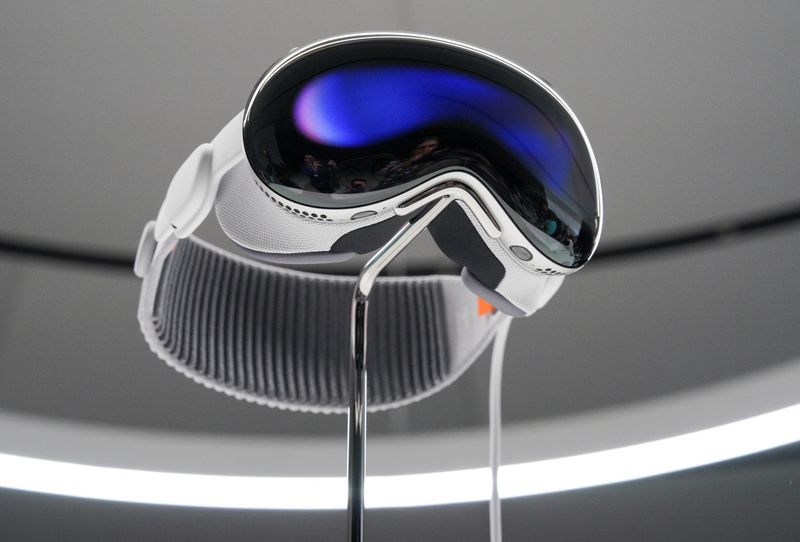Gold soars to record high over $3,900/oz amid yen slump, US rate cut bets
Investing.com -- Apple Inc (NASDAQ:AAPL) is shelving development of a lower-cost Vision Pro headset to prioritize a more urgent initiative: building smart glasses that could rival offerings from Meta Platforms Inc (NASDAQ:META). The company is reallocating internal resources in a bid to gain ground in a growing segment of AI-powered wearables that many in the tech industry view as the successor to the smartphone, according to Bloomberg, citing sources familiar with the matter.
The delayed headset, code-named N100, was targeted for a 2027 launch with a lighter form factor and lower price point than the current Vision Pro. But Apple recently told teams it is refocusing efforts on two smart glasses projects, aiming to accelerate timelines despite trailing key competitors.
The company’s first model, internally referred to as N50, will not have its own display and is designed to work in tandem with the iPhone. Apple intends to preview this model in 2025, with an anticipated release in 2027, while a display-equipped version originally targeted for 2028 has now been fast-tracked.
Meta, which first launched Ray-Ban Stories in 2021, has since gained traction in the segment with the Ray-Ban Meta, introduced in 2023. Last month, it refreshed its non-display model with longer battery life, improved cameras, and athletic designs, cementing its early lead in wearable AI.
Google, meanwhile, is developing its own AI smart glasses leveraging its Android XR operating system and the Gemini chatbot assistant. Models are expected to release later this year or in 2026 in partnership with eyewear companies including Warby Parker and Gentle Monster.
Even OpenAI is entering the wearable AI space, partnering with former Apple design chief Jony Ive to develop an AI-powered device for market launch.
These developments signal a broader realignment across major tech firms toward wearable devices driven by generative AI, always-on connectivity, and seamless user interfaces. Apple’s decision to pivot signals recognition that the company must adjust course now or risk missing a transformative hardware cycle.
While Apple still heads the high-end mixed-reality market with the Vision Pro, the product’s limitations in portability and affordability have constrained its adoption. Internal hopes are now pinned on AI-infused glasses that could offer a lighter, more scalable entry point for consumers.
By redirecting R&D focus now, Apple is betting that it can regain competitive ground in a race that increasingly favors nimble, AI-focused offerings. The challenge, however, remains steep as Meta continues to expand its lead in this next-generation category.
